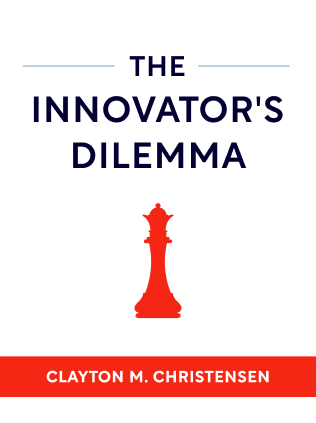

This article is an excerpt from the Shortform summary of "The Innovator's Dilemma" by Clayton M. Christensen. Shortform has the world's best summaries of books you should be reading.
Like this article? Sign up for a free trial here .
What is the history of steel? What are some examples of disruptive steel innovation?
The history of steel innovation includes the emergence of minimills. This disruptive innovation focused on low-quality, low-price steel products and was able to carve a successful place in the industry.
Read more about the history of steel and steel innovation.
Minimills and the History of Steel Innovation
In the mid-1960s, there was a critical event in the history of steel. Steel minimills disrupted the steel industry. As the name suggests, the minimills were simply steel mills at a much smaller scale.
When they emerged, the minimills could only produce lower-quality, lower-cost steel products than the established firms, the integrated steel mills. The only product they could make with the lower-quality steel was reinforcing bars (rebars), which were used to strengthen concrete. While it seems limited, this was innovative in the context of the history of steel.
Rebars represented the lowest quality, cost, and profits of any steel products. Additionally, rebar customers were less loyal to manufacturers over the course of the history of steel than customers of any other steel products, because price mattered more than any other attribute. As a result, integrated steel mills didn’t miss the rebar customers that the minimills took from them.
Over time, minimills increased the quality of their steel and invested in equipment to make different products. The next stage in the history of steel was that minimills were able to subsequently take over the next two highest markets:
- Larger bars, rods, and angle irons
- Structural beams
Paradoxically, integrated steel mills’ profits grew at the same time they were being pushed out of these low markets. Ceding the lowest-profit products to the minimills allowed the integrated mills to invest in high-quality steel products, such as rolled sheet steel, that brought in the biggest profits. As a bonus, the rolled sheet steel market was insulated from minimills’ threat because minimills couldn’t afford the equipment needed to make high-quality sheet steel—but that wouldn’t be true for long.
Thin-Slab Casting Causes Another Disruptive Steel Innovation
In 1987, the steel industry was disrupted again by a new technology called continuous thin-slab casting, which opened the sheet steel market to minimills. The technology offered a much more efficient way of producing sheet steel at a significantly lower cost than traditional methods, and it made it feasible for minimills to begin producing sheet steel.
However, the quality of thin-slab cast sheet steel was initially too low to appeal to high-end customers, such as car, can, and appliance makers. The steel was only suitable for the low end of the market, for products such as corrugated steel and pipes. Since thin-slab sheet steel would only attract limited customers—and bring in low profits—integrated steel mills didn’t adopt the technology, instead investing in equipment to further improve the quality of their sheet steel for their high-end customers.
Unrestrained by high-end customers and higher cost structures, a minimill called Nucor was the first to adopt the thin-slab casting technology. Within seven years of opening its first thin-slab facility, Nucor had opened a second mill and controlled 7 percent of the sheet steel market in North America.
With time, the technology improved and raised the quality of the sheet steel. (Shortform note:
Eventually, thin-slab casting could produce quality that traditional thick-slab casters couldn’t achieve. By 2017, only nine integrated steel mills were still operating in the U.S., and they produced about one-third of the country’s steel. By contrast, there were more than 100 minimills that produced nearly two-thirds of the country’s steel.)

———End of Preview———
Like what you just read? Read the rest of the world's best summary of Clayton M. Christensen's "The Innovator's Dilemma" at Shortform .
Here's what you'll find in our full The Innovator's Dilemma summary :
- Christensen's famous theory of disruptive innovation
- Why incumbent companies often ignore the disruptive threat, then move too slowly once the threat becomes obvious
- How you can disrupt entire industries yourself






